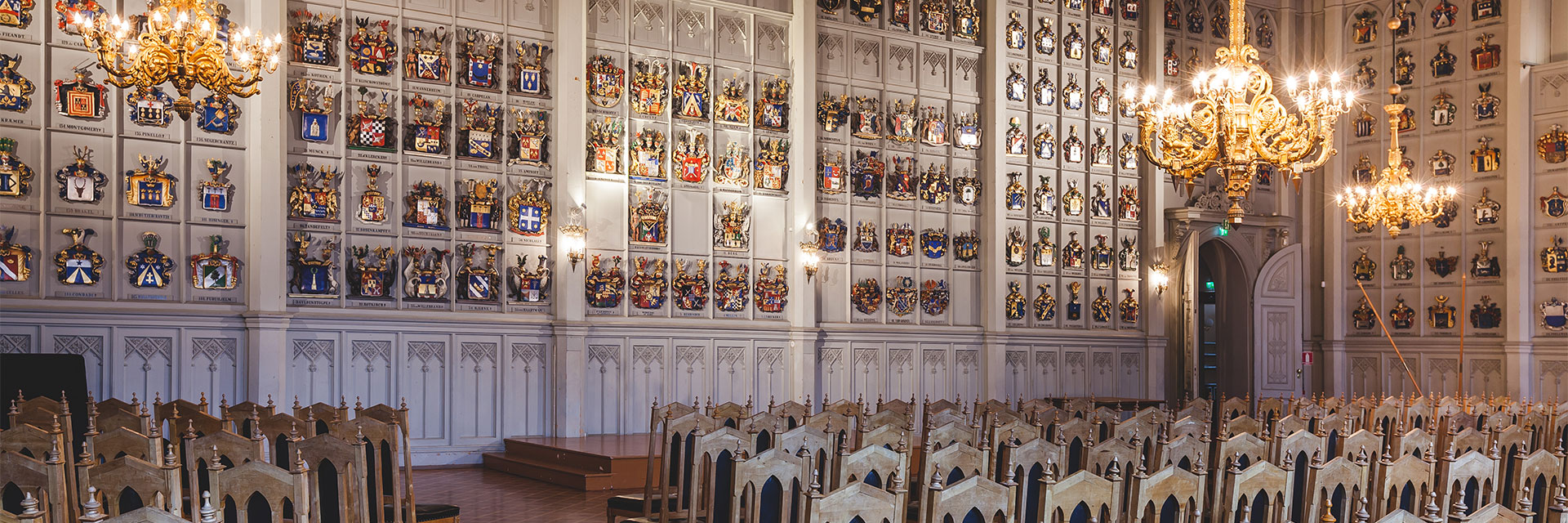
Arms and names
The symbols that we now call ‘coats of arms’ were originally heraldic shields, which were intended to be used for identification in the battlefield. The description of the shield (the blazon), with a picture of the coat of arms, is included in an armorial which is given to the noble family on the occasion of their ennoblement. The design of the coat of arms has varied over the years according to contemporary artistic trends. At the end of the 19th century, a young man called George Granfelt was assigned to draw all existing family coats of arms, which were subsequently published in a book called Vapenbok för Finlands Ridderskap och Adel (1889).
Family name
It was common for a person who was ennobled to choose a new family name. Until the 18th century, this could be done by simply announcing the new family name, as family names were not commonly used by people outside the nobility.
The name assumed by the newly ennobled person was often based on their coat of arms, their estate, or the region where the family came from. In the early 19th century, it became increasingly fashionable amongst the nobility to retain their ‘bourgeois’ family name, although with occasional minor changes or additions.
A name is not an automatic indication of nobility
Having a certain family name does not in itself guarantee that a person is a member of the nobility. A family may have several lineages, some of which are noble while others are not. Over the years, three families have adopted a Finnish family name as they were ennobled. Finnish family names are also occasionally used by other noble families, as some family members have decided to translate their names into Finnish.
Family Arms and Names Database
You can find more information about the noble families and their coats of arms in our Family Arms and Names Database.
